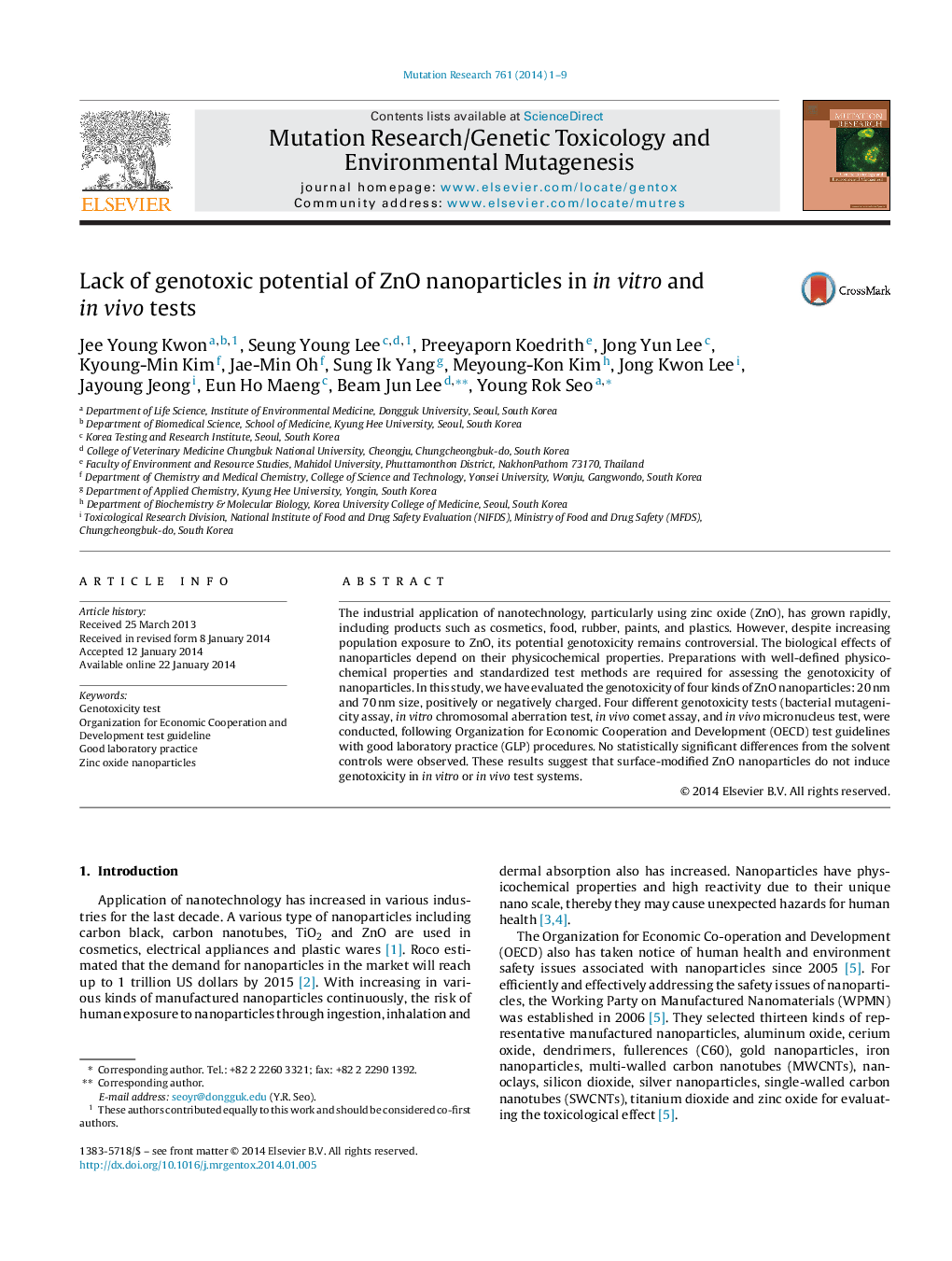| Article ID | Journal | Published Year | Pages | File Type |
|---|---|---|---|---|
| 2147981 | Mutation Research/Genetic Toxicology and Environmental Mutagenesis | 2014 | 9 Pages |
Abstract
The industrial application of nanotechnology, particularly using zinc oxide (ZnO), has grown rapidly, including products such as cosmetics, food, rubber, paints, and plastics. However, despite increasing population exposure to ZnO, its potential genotoxicity remains controversial. The biological effects of nanoparticles depend on their physicochemical properties. Preparations with well-defined physico-chemical properties and standardized test methods are required for assessing the genotoxicity of nanoparticles. In this study, we have evaluated the genotoxicity of four kinds of ZnO nanoparticles: 20Â nm and 70Â nm size, positively or negatively charged. Four different genotoxicity tests (bacterial mutagenicity assay, in vitro chromosomal aberration test, in vivo comet assay, and in vivo micronucleus test, were conducted, following Organization for Economic Cooperation and Development (OECD) test guidelines with good laboratory practice (GLP) procedures. No statistically significant differences from the solvent controls were observed. These results suggest that surface-modified ZnO nanoparticles do not induce genotoxicity in in vitro or in vivo test systems.
Related Topics
Life Sciences
Biochemistry, Genetics and Molecular Biology
Cancer Research
Authors
Jee Young Kwon, Seung Young Lee, Preeyaporn Koedrith, Jong Yun Lee, Kyoung-Min Kim, Jae-Min Oh, Sung Ik Yang, Meyoung-Kon Kim, Jong Kwon Lee, Jayoung Jeong, Eun Ho Maeng, Beam Jun Lee, Young Rok Seo,
